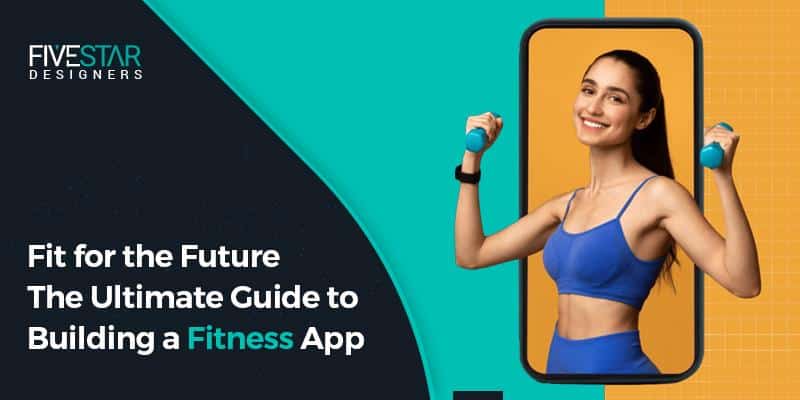At least once in our lives, we all have searched for a fitness app for toned abs just before that beach trip and been more than just disappointed finding skeletal, bare minimum PDF-style guides. The truth is, there aren’t many great fitness apps currently available in the market, which leaves a power vacuum to exploit for smart businesses.
About 30% of the US population struggles to find the time to commit to the gym, resorting to flexible home workouts, which can often be less stimulating and lacking passion, leading to quitting physical exercise altogether. Fitness apps can be more than just plain old exercise lists that spark that passion for fitness back for the consumer.
Let’s take a look at what makes a fitness app well-developed, unique enough to be distinctive by miles, and how it can be your ticket to serious revenue.
Recalibrating Your Aim
In order to stand out, you must reevaluate the core value of your app. Why are you investing in fitness app development? What will you do that’s different? Who is your target audience? Once you figure that out, you’re already on the golden road to success.
Ditching Ambiguous Metrics For Precise Data
Taking advantage of higher-quality data from accelerometers and heart rate monitors to get more precise, error-free data that would be more relevant to evaluating personalized plans in accordance with MET (Metabolic Equivalent of Task), along with IMU utilization for postural correction alerts, provides far more value to a workout than traditional fitness metrics.
Effective Techniques
- Edge preprocessing: quantize models inside the client to reduce telemetry.
- Drift correction: use periodic calibration nudges tied to contextual cues.
- Confidence propagation: carry uncertainty through analytics pipelines.
Behavior Driven Goal Settings and Personalized Plans
Move beyond static workout plans. Implement a hybrid of heuristics and continual learning that personal training software teams can operationalize. Use meta-parameters representing fatigue, recovery, and contextual capacity. These drive set/rep adjustments and session intensity scaling.
Implementation notes
- Lightweight on-device models for inference.
- Server-side aggregated models that respect differential privacy.
- Human-in-the-loop overrides for certified coaches.
Intentional Design Surrender For Optimal Performance
It is impractical to expect a perfect app, as there will be compromises in certain areas in order to favor other aspects of the app. The only way is to find out what brings more value to your app and choose it as your primary differentiator and brace for the inevitable compromises that come with it.
Real-Time Data Processing and Feedback
Adopt an event-first design where client events form the canonical source. Archive raw events selectively while storing derived summaries for analytics.
Execution Techniques
- Streaming ingestion via compact protobuf schemas.
- GraphQL endpoints for aggregated reads.
- WebSocket channels for live session synchronization.
Health Privacy Compliance
Health data requires elevated guardrails, so a health & fitness app should implement layered protection with encryption at rest, per-record access controls, and privacy-aware learning.
Solution Insights
- Federated learning epochs that never export raw user traces.
- Client-side differential privacy noise addition before uplink.
- Role-based audit trails inside storage systems.
Paint Your UX/UI Like A Canvas
The UX/UI of your fitness app is your first impression of your app to the consumer, and even if you have valuable and unique features, a poorly designed user interface will cause a heavy toll on user retention.
Valuable Signup Data Gathering
Most fitness apps get lost in collecting relevant data and deviate from what actually matters. Instead of traditional data harvesting, scientifically backed questionnaires and micro-assessments that adjust to your VO2 or strength markers across a single session
Progress Tracking and Helpful Suggestions
Taking a different approach than the generic streak building would seem refreshing to a lot of consumers. Scientifically backed progress markers that adapt to individualized data to provide actual, valuable milestones that offer improvement suggestions, or gamifying with reward systems, mix up the traditional boring progress tracking.
Implementation Ways
- Offer micro-goals tied to progressive overload metrics.
- Present inference-backed readiness scores before each session.
Community Building
One app cannot do it all, so the only way for your app to gain a favorable advantage is by means of collaboration across the industry instead of being a jack of all trades and a master of none.
Gym and Business Associations
Expose APIs that a gym management app can consume. Offer hooks for class schedules, member attendance, and equipment telemetry.
Course Of Action
- OAuth2 with PKCE for delegated access.
- Event webhooks for real-time attendance sync.
- Lightweight SDK that maps external IDs into internal user graphs.
Platform partnerships without lock-in
Provide a modular sync layer so hardware vendors, coaching platforms, and payroll systems can plug in. That increases TAM while preserving product control.
Monetization and Revenue Generation
A sustainable product needs aligned revenue models that scale across individual users and enterprise operators.
Multi-tier Subscriptions and Licenses
Sell seat licenses to gyms, subscription tiers to avid users, and API credits to partners. Personal training software buyers appreciate auditability and coach management tooling.
Implementation notes
- Billing metering by active device hours or coach seats.
- Admin dashboards for cohort analyses.
- Usage-based SLAs for enterprise customers.
Final Verdict
Workout tracker apps and personal training software are an untapped market dripping with potential, and with very little rival resistance, making them the perfect business investment for near guaranteed success if partnered with a specialized Fitness mobile app development company.
The market doesn’t just end with the exercise guidance and nutritional oversight; Gym management apps and wearable tech integration take it a step beyond the already discussed complex fitness app development.
The fitness industry is waiting for you to step in, so what’s stopping you? Contact 5StarDesigners for a free consultation session and get started on your app development journey now!
FAQs
What are the benefits of building a fitness app?
Due to the less competitive nature of the industry, developing a fitness app is considered to be a safe and lucrative investment as of 2025. With a wider audience to entertain and fewer rivalry threats, fitness apps can generate serious revenue through subscriptions and monetizations.
How long does it take to develop a fitness app?
The duration of the development cycle of any app cannot be pinpointed without keeping various variables in mind, such as complexity, features, and technology used. A skeletal build can be developed quickly within 2-3 months, whereas a flagship app could drag up to 1-1.5 years.
What features should I prioritize in my fitness app?
Prioritize features that align with your target audience’s needs, such as workout tracking, nutrition planning, or community support.



